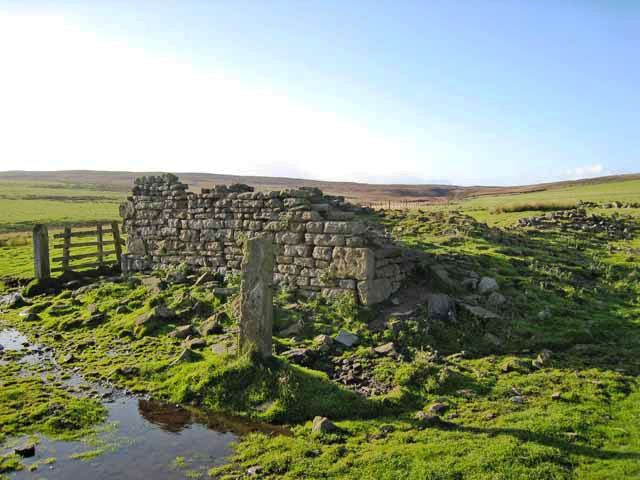Acton High (Old) Smelt Mill – NY97935345
The Blackett family built this mill in the seventeenth century. In its early years the mill’s income was significantly increased by smelting duty ores from Lord Barnard’s mines
The London Lead Company acquired the mill in 1708, and its ore from Shildon and other local mines was sent there to be smelted using ore-hearths. The latter burnt peat, and when Dr Wright visited in 1713 he noted that fuel was cheap and there was a good stock of peat at the mill. In order to crush slags more efficiently, stamps were built at Acton Mill in 1738.
The company gave up its leases in the Derwent Valley in 1808, when the High mill also closed.
Further information and references can be found in:
- Fairbairn. R.A. (1996) The Weardale Mines (British Mining No.56)
Acton Low (New) Smelt Mill – NY98245298

Ruins of Acton Low Mill
Copyright © Oliver Dixon and licensed for reuse under this Creative Commons Licence
Isaak Cookson took a 14 year leased of a two-acre site, on which this mill was built, from John Hood, of Elswick, on August 20th 1742. The new mill was soon run by the Acton New Mill Company, which was a partnership of Cookson, Marshall, Skottowe, Blenkinsop, Radley and Wilkinson. It had “reverberatory furnaces of increased throughput and better efficiency”, and coal was available from nearby pits.
Ore from the Fallowfield mine, near Acomb, was sent to Acton Mill for smelting in the 1760s. The pieces (ingots) of lead were then “carried first by pony to Blaydon and from thereon to Newcastle by keel boat”.
The Acton New Mill Company offered the leases of its mill, and a refinery and shot-house at Meadowfoot in Elswick, for sale in 1764. The latter belonged to the Cookson family. The offer was taken up by the London Lead Company, which paid £300.
It is likely that the New Mill closed in 1808, when the London Lead Company gave up its leases.
Further information and references can be found in:
- Fairbairn. R.A. (1996) The Weardale Mines (British Mining No.56)

